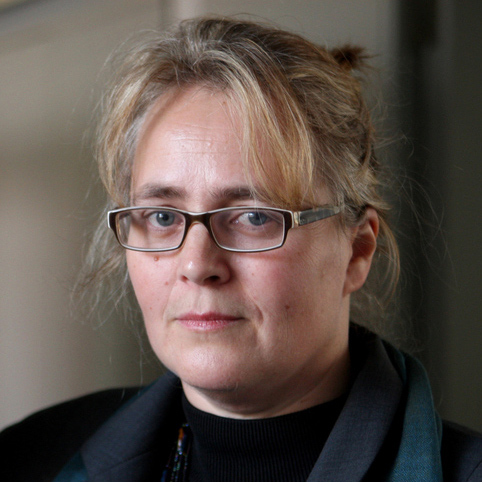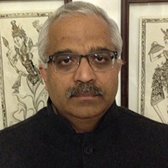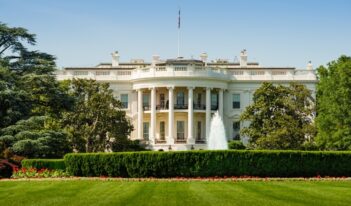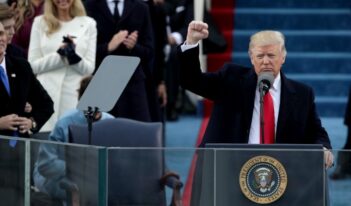
Political science models may help explain the U.S. withdrawal from the Paris Agreement.
President Donald Trump announced the United States’ withdrawal from the Paris Climate Agreement on the 132nd day of his presidency. Was this an impulsive reaction, or is there a logic to his action?
Comedian Seth Meyers suggests the former, saying that “rather than fill any of the hundreds of vacancies in his government, Trump spent the weekend golfing, and then woke up Monday morning to watch TV and pick fights on Twitter.” After all, Meyers continues, “why focus on just one city when you can fight the entire planet?” Yet the President’s action may have a perfectly rational explanation.
True, it is not clear what substantive purpose President Trump’s decision achieved in terms of U.S. environmental policy. The Paris Agreement was a voluntary treaty, not a mandatory one. Moreover, prior to the withdrawal, President Trump had already initiated the processes to revoke many climate action policies that President Barack Obama had put in place, such as the Clean Power Plan, new CAFE Standards, and the methane rule.
Yet the Paris treaty can be conceptualized as an international regime. Scholars note that international regimes are pillars of global governance and provide the backbone of the global regulatory infrastructure. These regimes are intended to influence domestic policies and behaviors. Although sometimes international regimes may have perverse effects on domestic policies, such as by providing reputational cover for bad behavior, countries participating in such regimes are typically obligated to translate their regime commitments into domestic regulations and policies.
Politics becomes especially important in the process of translating international obligations into domestic policies. Because domestic policies typically alter the benefits and costs faced by regulated parties, national decision-makers face pressures from multiple domestic interest groups about what, when, and how to regulate. As political scientists suggest, elected officials are motivated by the desire to get re-elected, in addition to acting on the basis of their own norms and personal agendas.
Scholars studying international regimes report that joining such international agreements can have both symbolic and substantive implications for signatories and their elected officials. Countries use treaties to signal their policy preferences to specific audiences. In the context of the Paris withdrawal, it is crucial to understand who these audiences are, what signal has President Trump sought to convey by this withdrawal, and critically: Why did he choose to withdraw in early June 2017?
We think the answer can be found by drawing on political scientist Graham Allison’s work on the Cuban Missile Crisis, in which he contrasts a simple unitary model of decision-making with more complex models of subunits responding either according to standard operating procedures or to protect their organizational turf (Graham did not model an impulsive politician as Seth Meyer suggests). Following his approach, we offer three hypothesized models that can explain the timing of the Paris withdrawal.
First is the “Foreign Policy Model.” We observe that Trump’s withdrawal announcement came after his rather stormy visit to Europe. He had just berated NATO allies for not paying their dues to the multilateral alliance. More broadly, he signaled his unhappiness with multilateral processes to solve global problems and seemed to echo the belief that countries eventually have to draw on their own resources to safeguard their interests. The Paris withdrawal can therefore be interpreted in terms of signaling America’s new foreign policy doctrine. Because climate change is an important issue for Europe, a withdrawal from the Paris Agreement, despite European lobbying, sends a clear signal on how President Trump seeks to reset the relationship between America and Europe. The “Pittsburgh versus Paris” framing, which he employed during his Rose Garden announcement, underscores his pledge to champion what he sees as American interests as opposed to seeking international validation.
Second is the “Domestic Politics Model.” All politics is local, as Tip O’Neill once famously observed. President Trump was—and still is—facing considerable pressure over the Russia investigation by both special counsel Robert Mueller and congressional committees, including testimony from the former Federal Bureau of Investigation Director James Comey. By announcing the Paris withdrawal, Trump could be interpreted as seeking to move the conversation to another topic. Furthermore, this withdrawal is consistent with his campaign rhetoric and should appeal to his core supporters, therefore strengthening his support among House and Senate Republicans if the Russian investigations take an ominous turn for him.
Third is the “Bureaucratic Politics Model.” Policymaking is a complex process and different bureaucratic structures provide input at various stages. A complex issue such as climate change probably witnessed intense debate within the Trump Administration because administrative units offer different interpretations of policy problems and favor different approaches to solving them. These differences might reflect the different constituencies they represent as well as variations in their professional norms and operating procedures.
Newspaper reports suggest that units such as the Environmental Protection Agency (EPA), the Department of Energy, Department of Defense (DOD), and the Department of State were actively involved in this debate. It seems that the State Department and the DOD were in favor of remaining in the Paris Agreement, while the EPA—personified by Administrator Scott Pruitt—was aggressively pushing for exiting it. The President may have been motivated simply to bring an end to this bureaucratic debate and departmental rivalries. This way he also brought to an end the speculation about the future of the Paris Agreement and the lobbying he was subjected to, both from within and outside the White House. The EPA Administrator’s perspective prevailed.
Rather than seeing Trump’s announcement over the Paris Agreement as irrational or even random, a consideration of different conceptual lenses—international, domestic, and bureaucratic—suggests reinforcing reasons that explain the timing of the Paris withdrawal. Viewed this way, the timing of the announcement may not be an impulsive act. Taken together, these models can shed some light on why he chose to announce his decision on the 132nd day of his Presidency.





